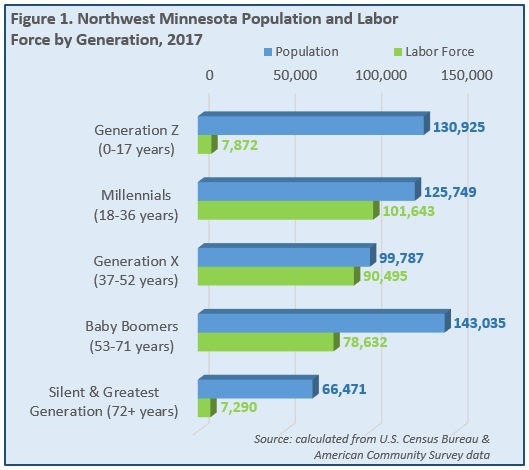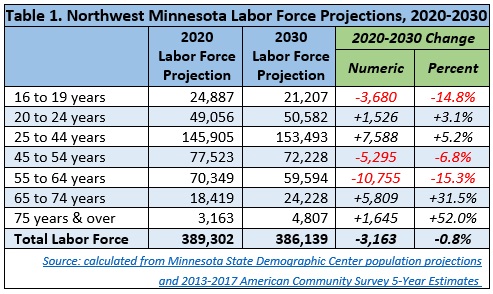 The presence of such industry powerhouses as Polaris, Arctic Cat and New Flyer make Northwest Minnesota a hub of transportation equipment manufacturing.
The presence of such industry powerhouses as Polaris, Arctic Cat and New Flyer make Northwest Minnesota a hub of transportation equipment manufacturing.
From wheat and potatoes to soybeans and sugar beets, the region is a major producer and processor of food staples and specialty agricultural products.
Want the freshest data delivered by email? Subscribe to our regional newsletters.
6/21/2019 4:00:00 PM
Cameron Macht
With a total of about 566,000 people, Northwest Minnesota’s population has been growing but also aging over time. There are now six generations living together, with baby boomers still comprising the largest generation in the region, with just over 143,000 people, followed by Generation Z with about 131,000 youngsters and millennials with 126,000 people. The region has a relatively small representation from Generation X with about 100,000 people, while the two oldest generations – Silent and Greatest – have the smallest population at about 66,500 (Figure 1).

According to population projections from the Minnesota State Demographic Center, Northwest Minnesota is expected to gain just over 7,000 new residents through 2030, with much of the growth due to an aging population. If Northwest Minnesota changes at the projected rates, applying current labor force participation rates by age group to future population projections by age group means the region will see a slight decrease in the labor force over the next decade. This departure from a growing to a shrinking labor force would be unprecedented in the region (Table 1).

Using data from the Census Bureau’s Population Estimates program, DEED created an interactive visualization that provides insight into the estimated size of the generations in each region and county in the state for 2017. This tool can help local elected officials and workforce development professionals understand the demographic shifts occurring in their geography.
Contact Cameron Macht at 320-441-6596.